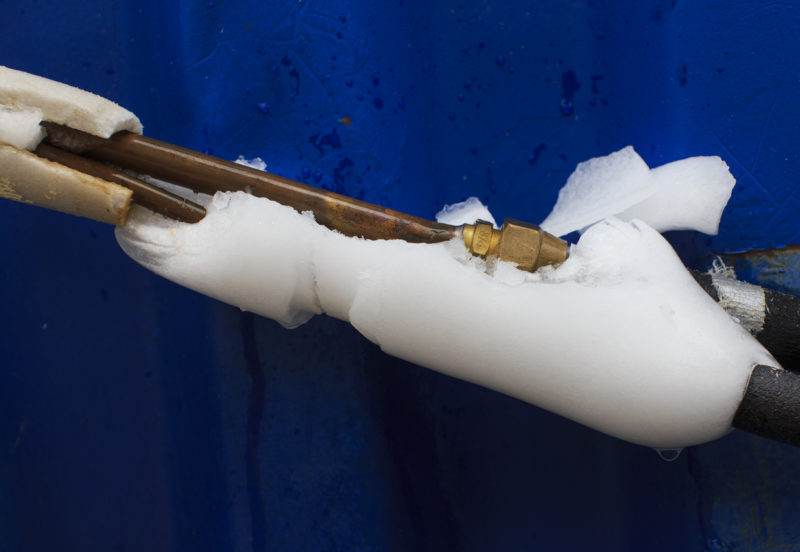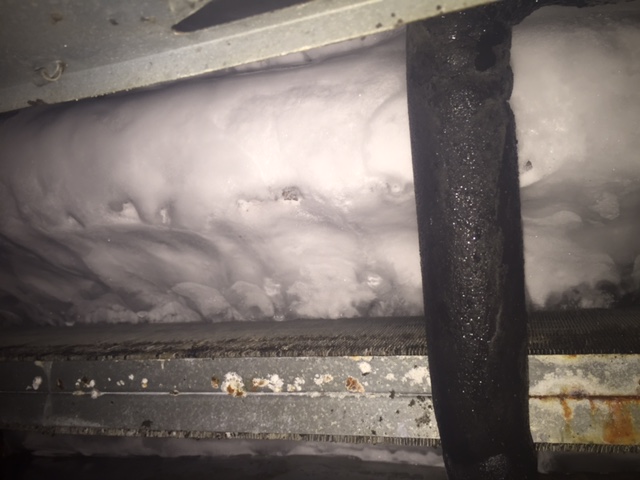How to Deal With a Frozen AC Pipe - Critical Steps for Recovery
How to Deal With a Frozen AC Pipe - Critical Steps for Recovery
Blog Article
Are you trying to find critical info What Do I Do If My AC Pipe Is Frozen?

Introduction
Discovering that your air conditioning pipeline is frozen can be concerning, especially throughout warm summer months when you rely on your a/c the most. Comprehending what to do in such a scenario is vital to avoid more damage to your air conditioning system and ensure your convenience inside your home.
Understanding the Causes
A number of aspects can contribute to the freezing of an air conditioning pipeline. Recognizing these causes can assist you deal with the concern successfully.
Absence of Airflow
One common source of a frozen air conditioning pipeline is inadequate air flow. When the airflow over the evaporator coil is limited, it can trigger the coil to drop below freezing temperature, bring about ice formation on the pipeline.
Low Refrigerant Levels
Insufficient cooling agent levels in your air conditioning system can additionally cause an icy pipeline. Low refrigerant degrees can trigger the pressure in the system to go down, causing the freezing of moisture on the evaporator coil.
Winter Conditions
In colder environments, freezing temperatures outside can add to the freezing of a/c pipelines. If your AC system is not properly shielded or if there are leakages in the ductwork, cool air can infiltrate the system, creating the pipeline to ice up.
Dirty Air Filters
Unclean or blocked air filters can restrict airflow in your air conditioner system, bring about different issues, consisting of a frozen pipeline. It's vital to change or cleanse your air filters frequently to make sure correct air movement and avoid ice build-up.
Indicators of a Frozen Air Conditioning Pipe
Recognizing the indicators of a frozen AC pipe is essential for prompt activity.
Reduced Airflow
If you notice a considerable reduction in air movement from your vents, it could show a frozen pipe.
Ice Buildup on the Pipe
Visible ice buildup on the cooling agent line or the evaporator coil is a clear indication of a frozen AC pipe.
Strange Sounds from the Unit
Uncommon noises, such as hissing or bubbling, coming from your AC device can signify that there's ice present on the pipeline.
Immediate Actions to Take
When faced with a frozen AC pipeline, it's essential to act quickly to stop additional damage to your air conditioning system.
Turning off the air conditioning
The primary step is to switch off your ac system to prevent the system from running and exacerbating the concern.
Looking for Blockages
Check the area around the interior system for any blockages that may be obstructing air movement, such as furnishings or curtains.
Defrosting the Pipe
You can utilize gentle approaches like positioning towels soaked in warm water around the frozen pipeline to help thaw it gradually.
Safety nets
Taking preventive measures can aid stay clear of future events of a frozen AC pipe.
When DIY Methods Fail
If your efforts to thaw the pipe or address other problems are unsuccessful, it's time to call in a specialist.
Value of Hiring a Professional HVAC Technician
A certified HVAC professional has the experience and devices required to identify and fix concerns with your air conditioner system securely and effectively.
Normal Maintenance Checks
Set up normal maintenance contact an expert HVAC specialist to ensure that your air conditioner system is running successfully.
Altering Air Filters
Frequently replace or clean your air filters to prevent air flow restrictions and preserve optimum performance.
Shielding Exposed Pipes
If your air conditioning pipelines are exposed to chilly temperature levels, consider protecting them to stop cold during winter season.
Looking For Professional Help
If DIY techniques fall short to settle the issue or if you're unclear concerning how to proceed, it's finest to look for assistance from a qualified HVAC specialist.
Final thought
Handling a frozen a/c pipeline can be an aggravating experience, but recognizing how to respond can assist minimize damage and recover convenience to your home. By recognizing the causes, identifying the indications, and taking prompt action, you can effectively address the issue and avoid future occurrences.
Frozen AC Line: Why It Happens & What To Do About It
A frozen AC line can be a rather peculiar sight in a place like Phoenix, Arizona where nothing ever freezes. In this post, we’ll discuss what makes an air conditioner line frozen – and what you can do about it.
Dirty Air Filters
Did you know that you should be cleaning or replacing your air filters on a monthly basis? Failing to do this can result in airflow issues that, in turn, cause your evaporator coils and lines to freeze over. You’ll notice a buildup of ice on both components, although the buildup on your pipes will, of course, be more evident unless you open your air condition up to reveal the coils.
What To Do About It
Give your air filter a good cleaning if it’s reusable. If not, replace the filter outright. Next, switch your air conditioner’s fan setting on and leave it there for 2-3 hours. This will draw warm air in, helping to thaw your evaporator coil. You can also check out this article for some tips on cleaning the coils themselves if you’d like to speed the process up. Before you switch the unit back to its normal state, make sure the supply vents are completely unobstructed and free of dust or other debris.
If you keep having this issue even after replacing your filters regularly, contact a local HVAC repair company and have them inspect your evaporator coil, ductwork, and any other components that may be at fault. If you live in the Phoenix, Arizona area, give American Home Water and Air a call.
Low Refrigerant Levels/Leakage
What To Do About It
Contrary to what air conditioner “recharge” companies often tell their clients about refrigerant, it should never need to be simply refilled. You see, refrigerant runs in what experts refer to as a “closed loop.” Refrigerant really shouldn’t be leaving that loop. If it is, you’ve got a leak.
Paying someone to come and pump more refrigerant into your system (aka “recharge” it) isn’t the solution. Doing that will simply kick the can down the road. Besides, refrigerant leaks can be harmful to the environment and people in your home.
Rather, you need to take care of the leak with the help of a technician. Check out this article for some more information about dealing with air conditioners that are leaking refrigerant. Before you contact a technician, switch your thermostat to the off position. Then, switch the fan setting on and let it run for 2-3 hours so the unit can thaw.
Improper Temperature Setting
Improper temperature settings can also cause a drop in your air conditioner’s pressure. What many people don’t realize is that air conditioners are actually designed to run when temperatures have fallen above roughly 60 degrees Fahrenheit. If you run the unit when it’s cold outside, you’ll run into many issues, including frozen components.

I'm just very fascinated by Air Conditioner Frozen? How To Fix your Frozen AC Line and I hope you appreciated our page. Please take the time to distribute this entry if you liked it. Many thanks for taking the time to read it.
Book Today Report this page